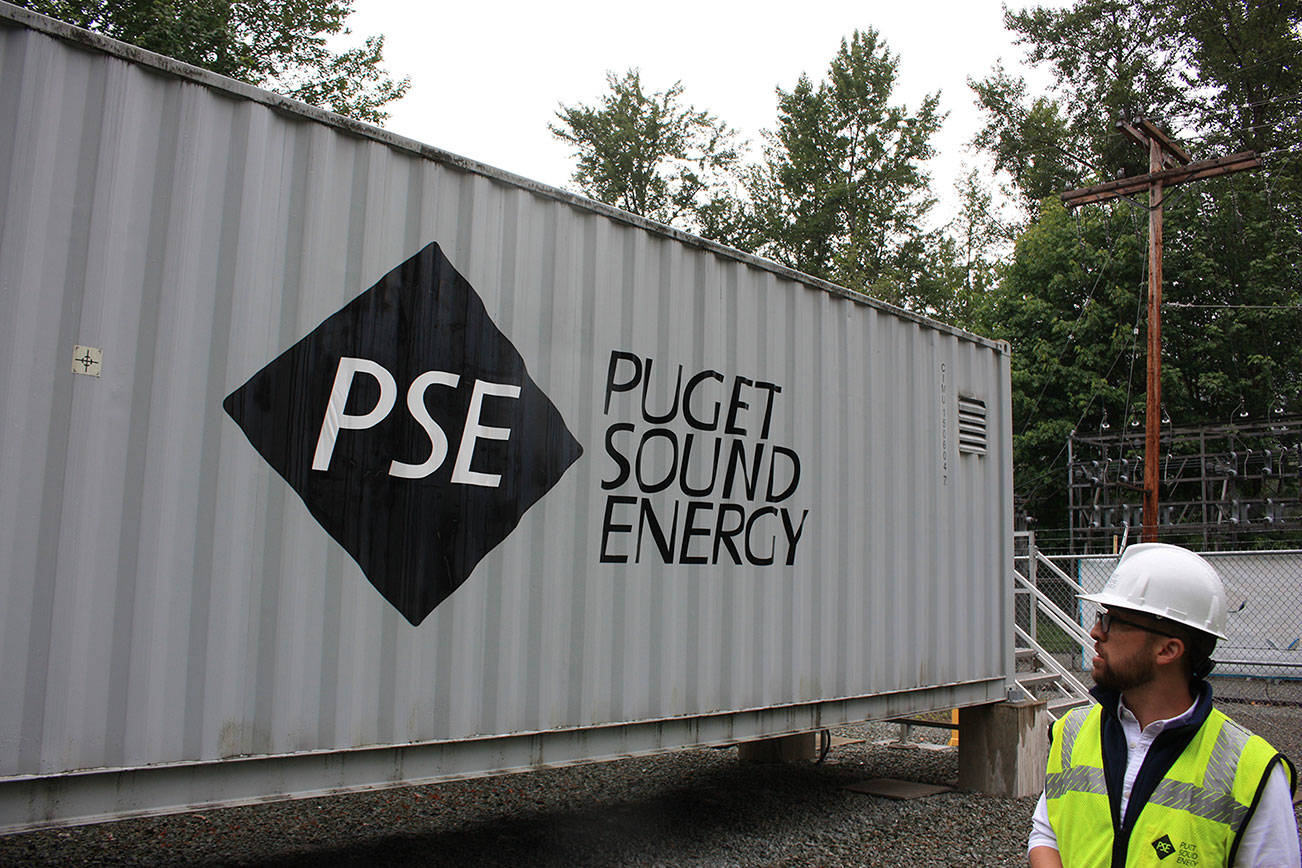Power used to be pretty simple for utility companies: build a coal plant or dam, run transmission wires and some substations and customers flip a light switch. But the pressures of electric vehicles and climate change are quickly pushing electric grids to evolve, and Washington state and utility providers are grappling with the best way to move forward.
In 2019, the Washington State Legislature passed the Clean Energy Transformation Act, which committed the state to supplying carbon-neutral power by 2045. This means that power companies won’t be allowed to use energy that emits greenhouse gases, and that the use of fossil fuels to provide power in the state is going the way of the dinosaur.
But providing that green energy isn’t quite as simple as swapping out a coal power plant for a wind or solar farm. Wind only blows sometimes, and solar farms don’t produce power at night. More people moving to Puget Sound, and vehicles switching from gas to electricity as fuel means that the demand for power will only go up.
This means that on top of providing energy, new regulations and infrastructure must be created to quickly and efficiently shoot power across Washington state and the Pacific Northwest. It also means that as more people install their own solar panels and seek to put power back into the grid, coordinating all moving parts will become more complex.
One way to think about this, said Fred Huette, senior policy associate for the NW Energy Coalition, is to envision a “harmonious grid” where different aspects of the system are coordinated. It’s fitting together renewable resources, personal solar panels, battery storage and increasing demand in a similar way to how an orchestra plays different parts but all works together.
“(It’s) finding the right role that all these different things can play,” Huette said.
A white paper released by the Coalition described a way in which a future grid could work.
“That’s not just a change or an upgrade. It’s a paradigm shift that changes the relationship between utilities and customers,” it states, but integrating customer and provider power.
That connectivity will take a lot more planning. Elaine Markham, grid modernization manager with Puget Sound Energy, said they’re gathering data to figure out how energy is flowing across the system. They’re also trying to figure out how to facilitate home charging, and creating a system of programs or rate structures to encourage customers to support the grid.
“Ultimately this is going to end up being a partnership with our customers as well,” Markham said.
Figuring out when people will be using power, and how much will be essential. Utilities will need to find ways to provide enough power for an influx of people charging their vehicles for a few hours at night, for example.
Battery storage could become a bigger part of the system in the coming years. PSE started a storage project in 2015 in Glacier, near Bellingham, to test this technology. And more transmission wire will have to be built to meet greater need.
And while this makes the grid more complex to manage, it also makes it more resilient. If a large power producer like a dam, or nuclear or coal plant goes offline, it would have much more of an impact than if a few wind turbines which would need to be repaired.
According the the U.S Energy Information Administration, there were some 106 million MWh of energy generated in Washington state in 2019. Of this, 91 million were sold.
More than half of this was from hydro power, according to the Washington State Department of Commerce. The state received nearly 11% of its power from coal, down from 13% in 2017. At the same time, natural gas — another fossil fuel that generates carbon emissions — sat around 13% in 2019.
Renewable resources like wind power have been slowly increasing in the state, and are expected to keep expanding. PSE in November, PSE completed the Skookumchuck Wind Facility had been brought online. It’s the largest wind turbine project in Western Washington, and will deliver up to 137 MW of power.
While Washington state currently gets most of its power from dams, and these provide clean energy and can more easily adjust their power generation to meet demand, they also come with their own set of problems.
Many dams have made habitat impossible or difficult to reach for the region’s numerous salmon species. But future technology, like offshore wind turbines, could create alternative power sources for utilities.
A recent example came in 2019, when the Yakama and Lummi nations called for the removal of three dams along the Columbia River.
But the state is also looking at the future of power with environmental justice in mind, said Michael Furze, assistant director of the Washington State Department of Commerce’s energy division.
They have been working with community organizations, especially those representing frontline and BIPOC communities as they draft new plans for green energy. This includes engaging with community members earlier during projects, and finding ways to make projects more equitable.
Mariel Thuraisingham, clean energy lead for Front and Centered, said plans for a green future must include all voices, and those which have historically been shut out of planning and development processes.
“We know that the just transition to a clean energy future must include an equitable distribution of benefits,” Thuraisingham said. “Equity is a critical component, and a core principle, in driving forward all environmental policies.”
A recently released report by the state Environmental Justice Task Force recommends ways the state can develop policies to better serve all its residents.
It makes several recommendations, including incorporating environmental justice into state environmental laws, requiring an environmental justice analysis of policies and to equitably distribute state investments for the environment.



